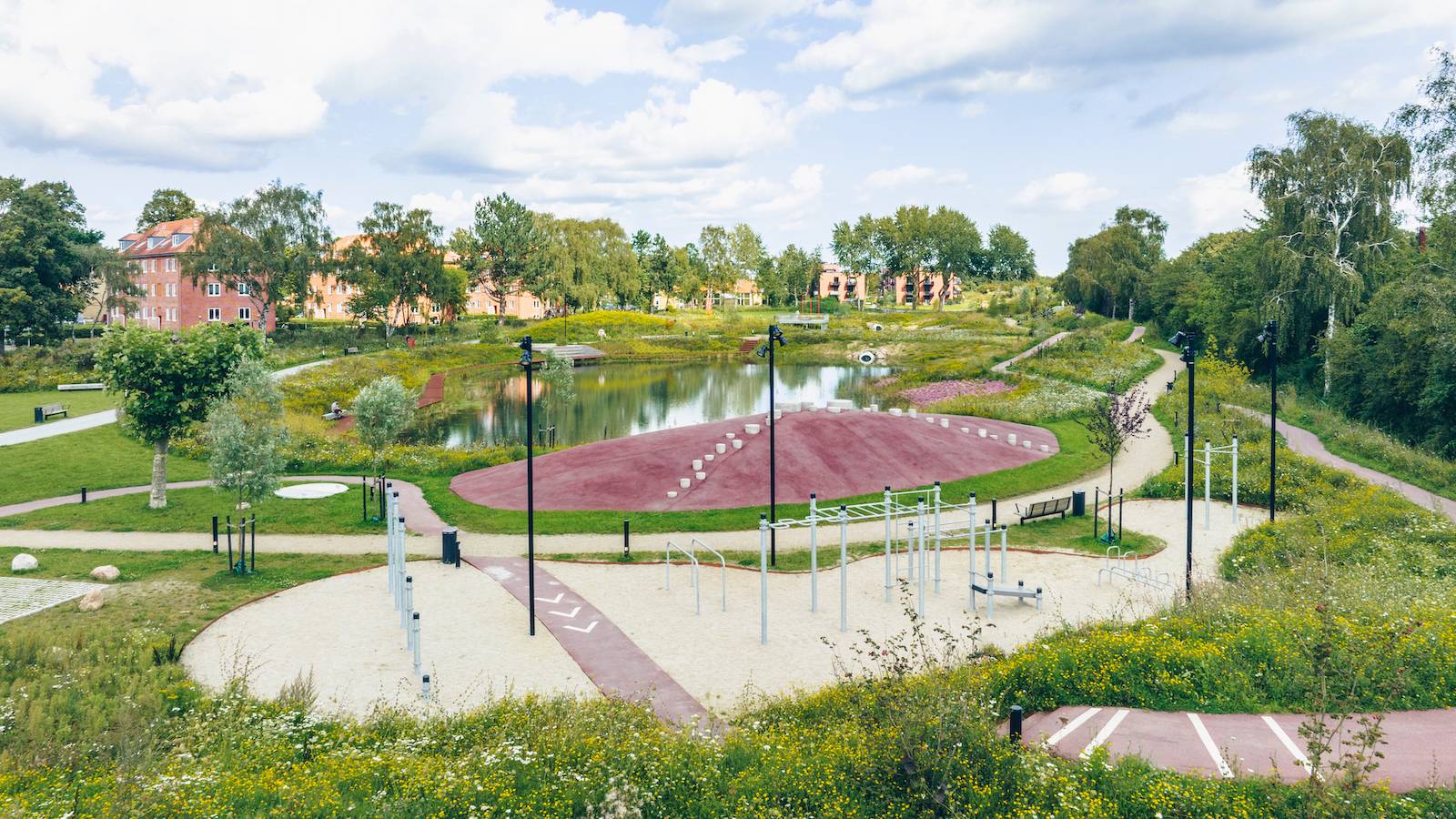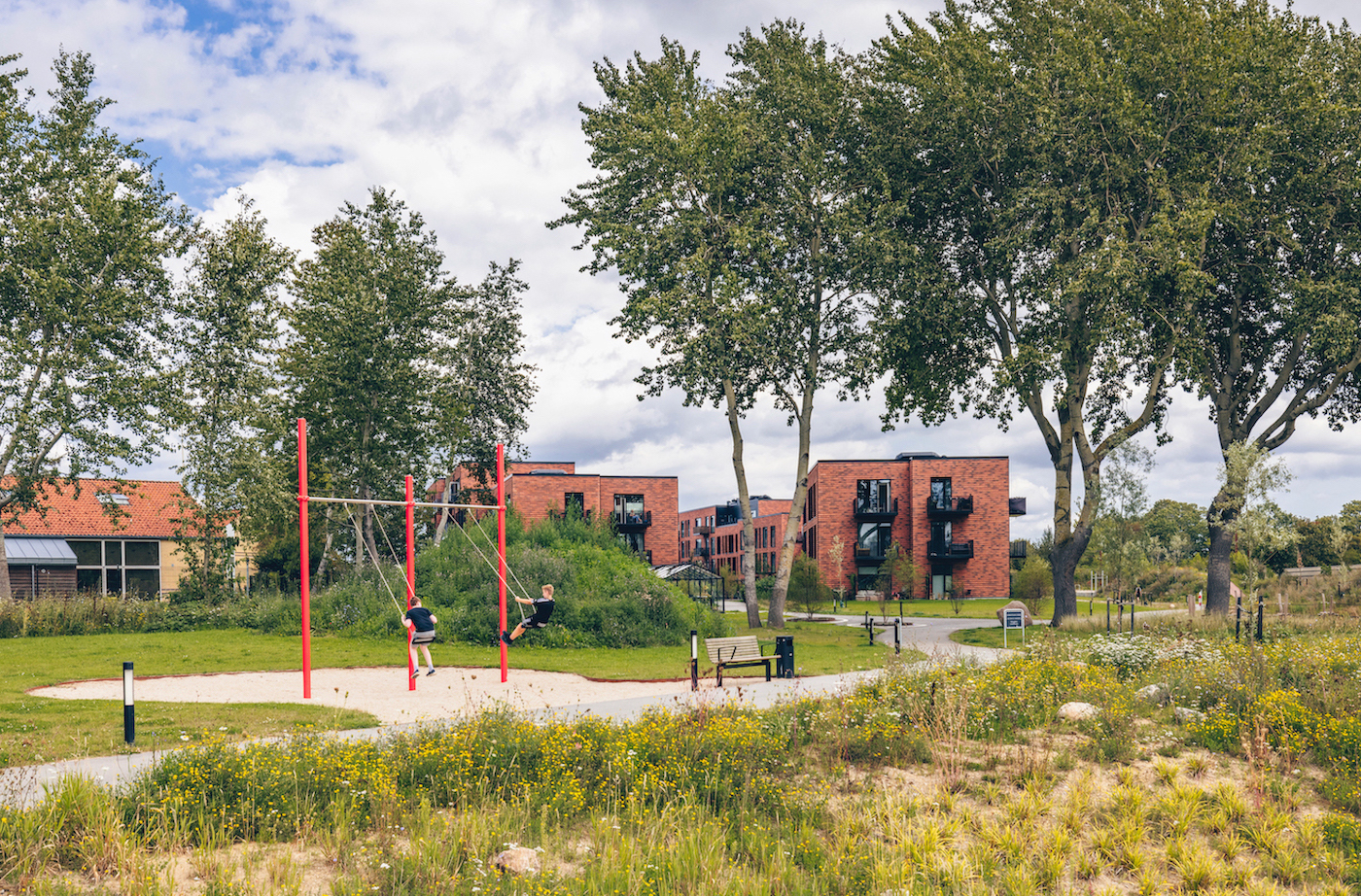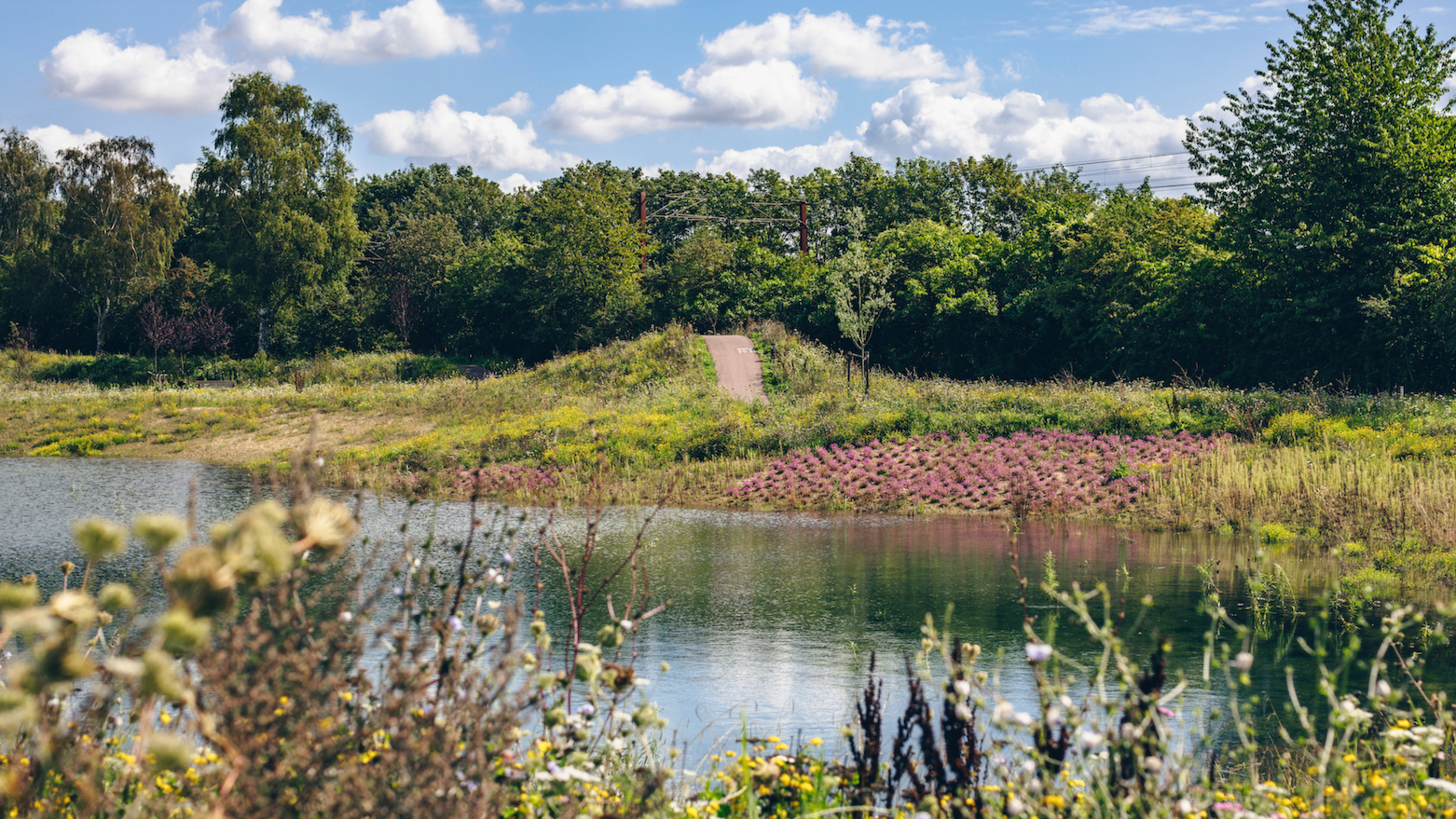Pulsparken demonstrates how climate adaptation can be transformed into an active, dynamic space for training, exercise, and play. Furthermore, it offers serene locations for mental relaxation. The park boasts diverse facilities suitable for people of all ages and fitness levels, providing opportunities for informal training, exercise, and play. The park’s thoughtfully designed pathways cater to walkers, runners, cyclists, and roller skaters, ensuring inclusivity.
Our commitment to biodiversity, seen in the park’s landscaping, both on land and in water, offers a wide range of nature experiences throughout the seasons. This commitment enhances the environment for both residents and the local ecosystem, making Pulsparken an inviting community space.














